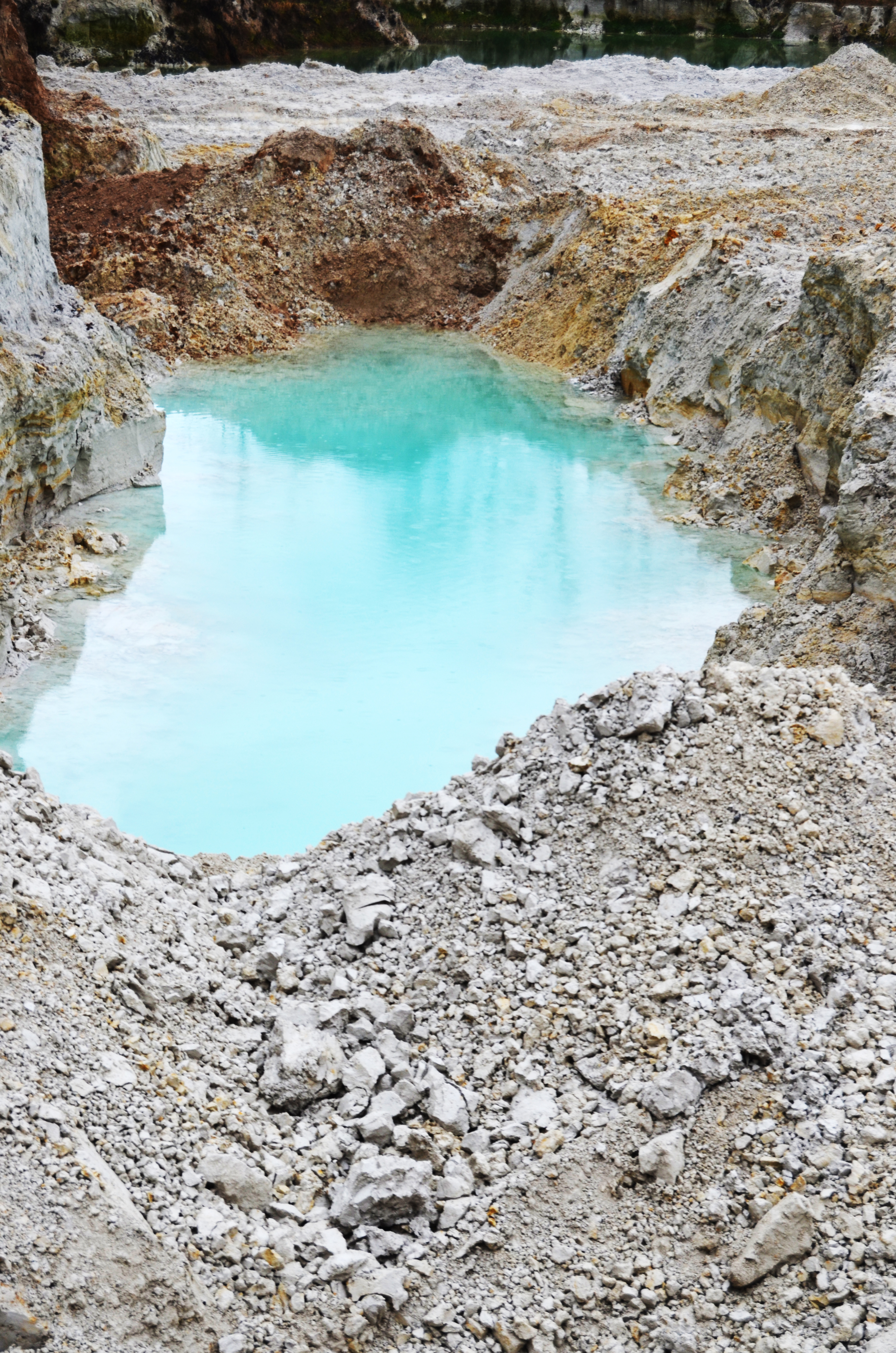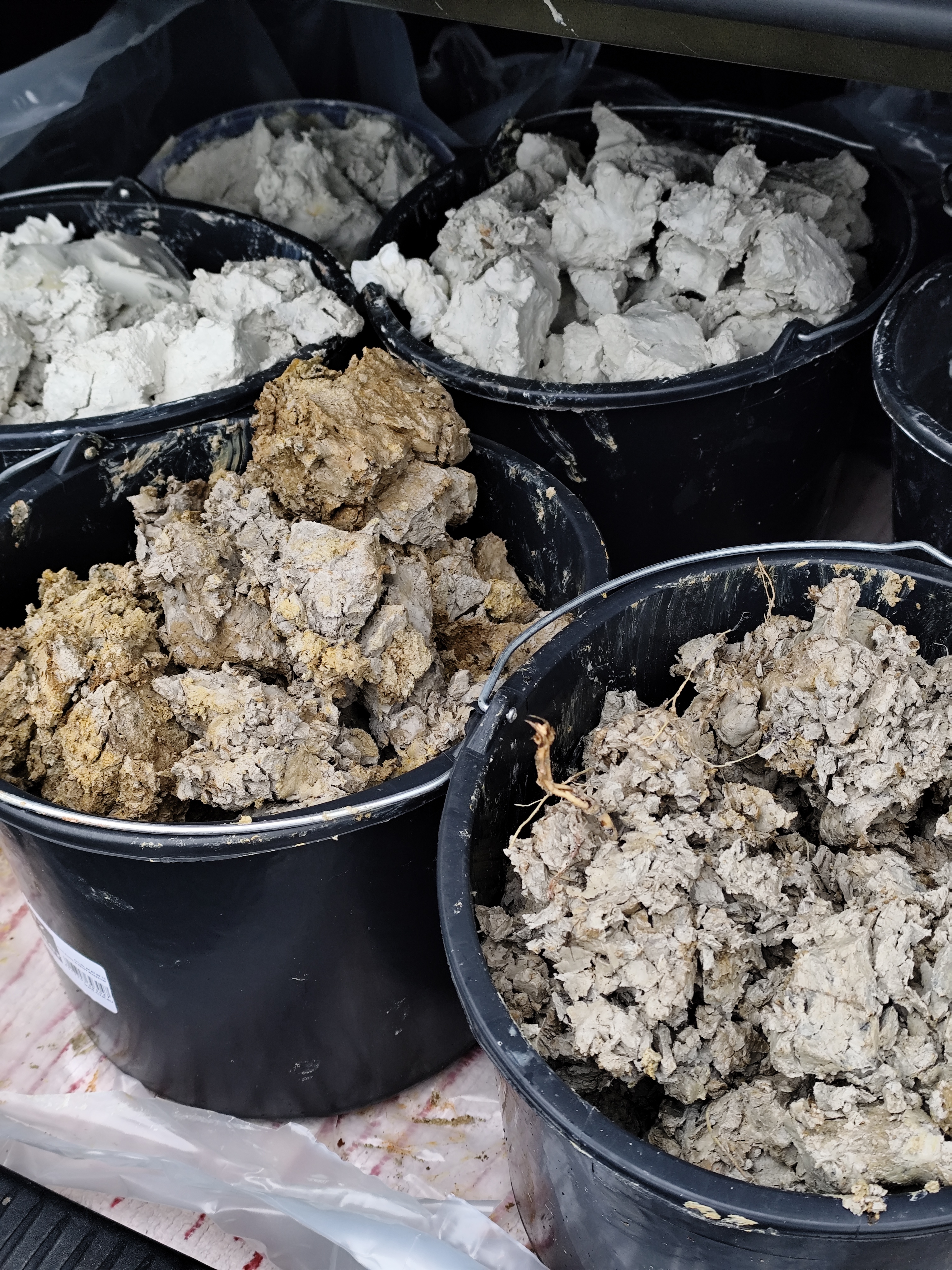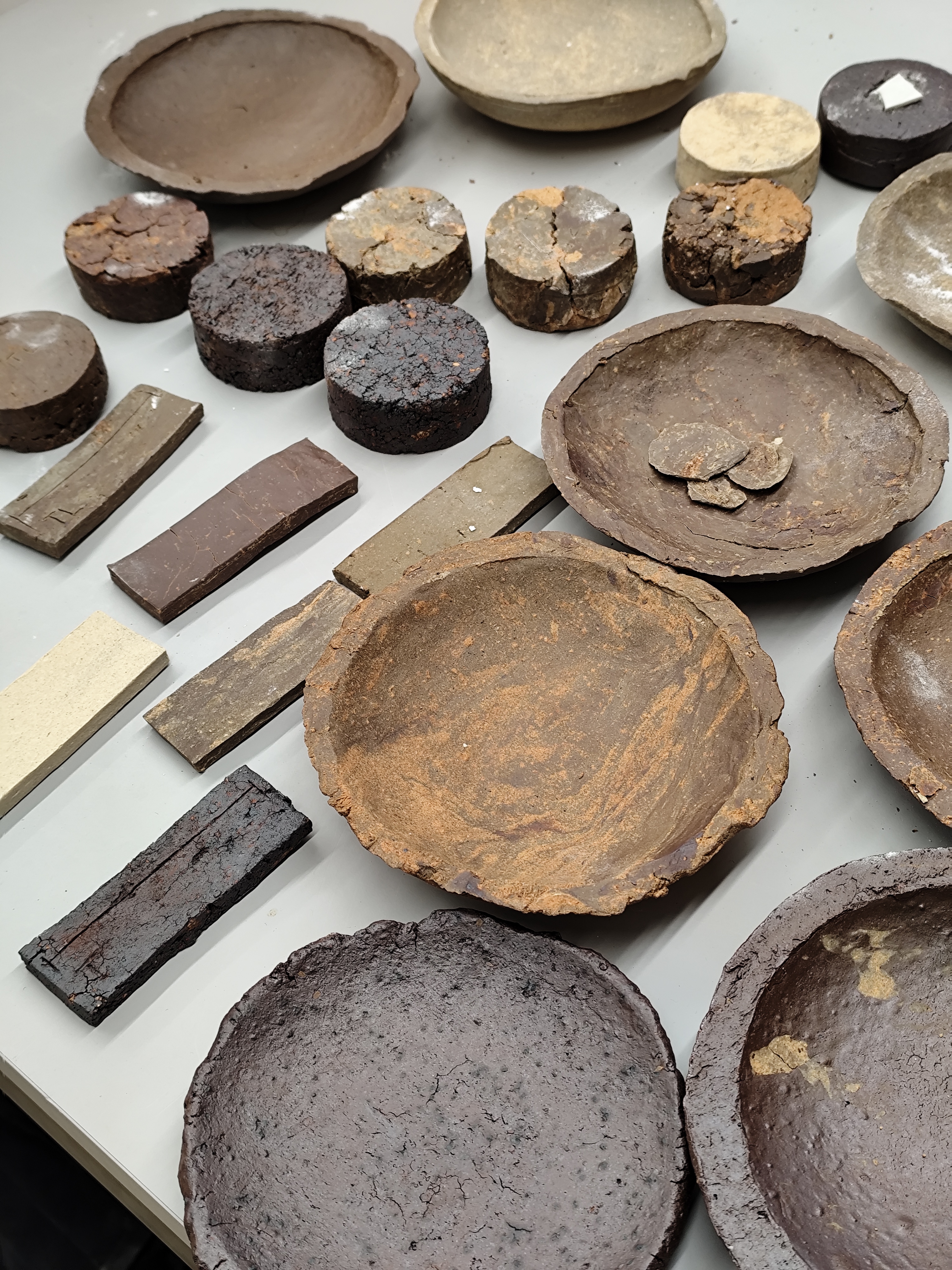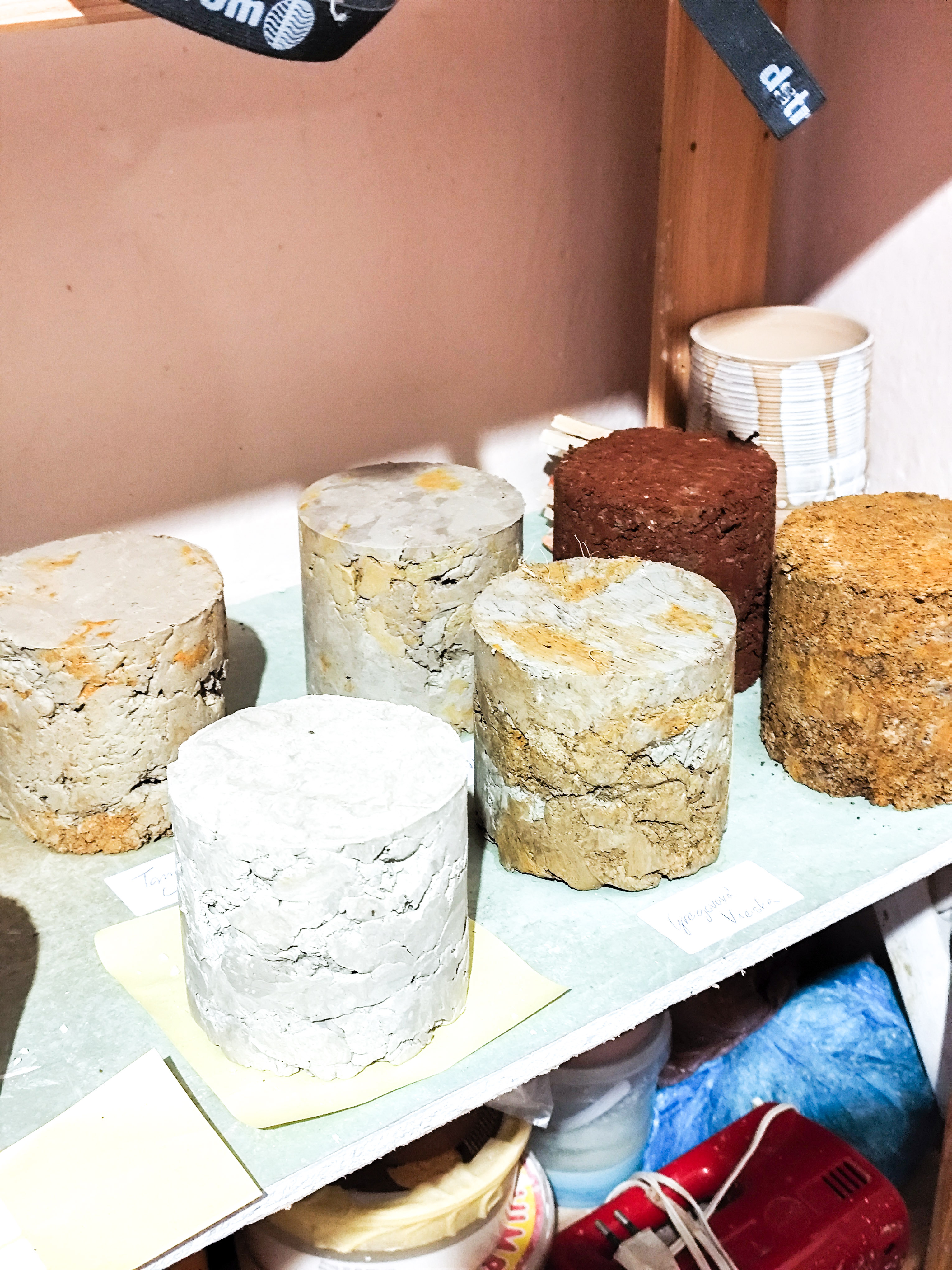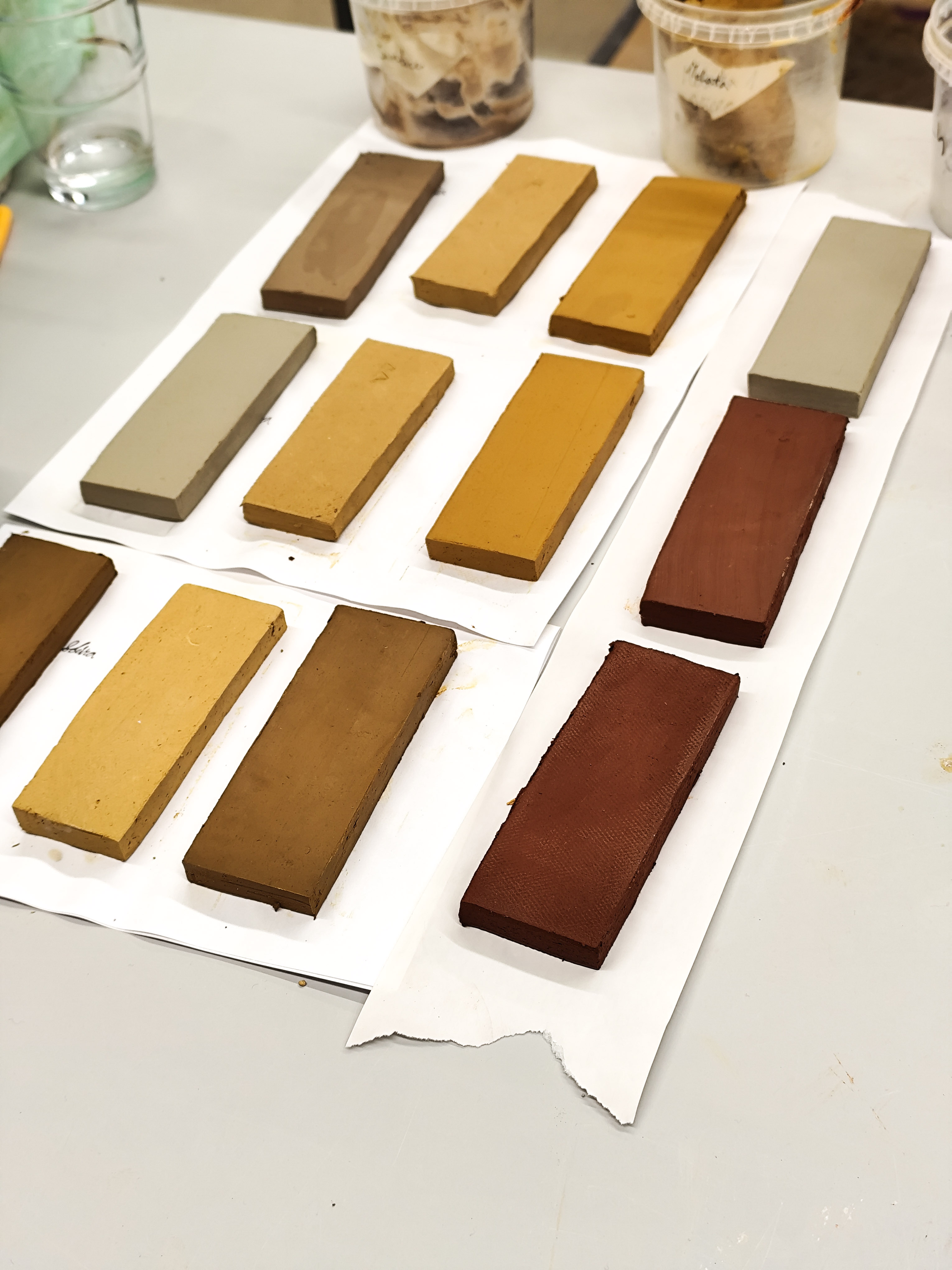Regaining a sense of belonging
GEMERSKE UNEARHTED
Reconnecting with the traditional ceramics production of Gemer region
The project focuses on bridging the gap between local traditions and contemporary society. Its goal is to explore regional materials and support the reconnection of local communities with the area's rich ceramic-making heritage.
Slovakia
Regional
The historic Gemer-Malohont region. Areas surrounding towns like Poltár, Kalinovo, Rožňava.
Mainly rural
It refers to other types of transformations (soft investment)
Early concept
No
No
As an individual
The GEMERSKE UNEARTHED project aims to re-establish a connection between local communities and the ceramics production heritage of the Gemer – Malohont region. In its first phase, the project focuses on investigating local materials suitable for ceramics production. The goal of this material research is to highlight the value of regional, natural resources that also possess notable visual appeal in terms of aesthetics. This phase is primarily led by the project leader, with the community actively involved in identifying clay deposits. By tapping into the memories of older residents and the knowledge locals have of the natural environment, we are identifying key areas for material research, such as old quarries. The findings are planned to be shared with the public through a dedicated project website.
Following the research phase, the project will evolve into a collaborative educational platform, offering workshops where locals can engage in discussions about the region's ceramics heritage, the use of local materials, and ways to reconnect with clay and ceramics. These workshops will take place at local creative community centers and in natural settings.
In addition to its participatory approach, the project addresses sustainability through the promotion of local materials. The core concept of the project could also be adapted to other regions where a specific craft or material has historically been central to their cultural identity.
Following the research phase, the project will evolve into a collaborative educational platform, offering workshops where locals can engage in discussions about the region's ceramics heritage, the use of local materials, and ways to reconnect with clay and ceramics. These workshops will take place at local creative community centers and in natural settings.
In addition to its participatory approach, the project addresses sustainability through the promotion of local materials. The core concept of the project could also be adapted to other regions where a specific craft or material has historically been central to their cultural identity.
local heritage
ceramics
material research
craft education
cultural identity
The project is dedicated to the research and utilization of local materials for ceramic production, addressing the challenges associated with industrial clay and other ceramic materials by promoting small-scale manufacturing practices. The use of locally sourced clay mitigates the carbon footprint related to the production, packaging, and transportation of ceramic materials, while also contributing to the aesthetic value of the finished pieces. The research specifically focuses on extracting clay from former quarries, thereby safeguarding the natural landscape of undisturbed clay deposits. In this context, the project repurposes industrial by-products—residual clay left behind following mining activities. Ultimately, the initiative aims to foster a conscientious approach to sourcing local materials, emphasizing the importance of environmental stewardship.
The project seeks to address the challenge of reconnecting with the folk cultural heritage of a region within the context of contemporary local lifestyles. Its goal is to explore how the region can rediscover the historical prominence of pottery production in the Gemer-Malohont area without falling into the trap of folklorism. By emphasizing the aesthetic value of locally sourced natural materials, the project aligns with the principles of critical regionalism and the materiality shift in design. Through the publication of research findings and scholarly texts, the project aims to revitalize and reinforce the cultural importance of ceramic production in the region.
One of the projects goal is to make informations about the ceramics tradition and contemporary practice in the region acessible to the general public. This should be achieved by a freely acessible online platform/ website acessible in both Slovak and Hungarian lengualge as the majer precentige of the community in the Gemer-Malohont region is part of the Hungarian minority of Slovakia. All the outputs are planned to be acessible in English as well, to accomodate the needs of the public beyond regional level. In the second phase of the project (planned after the first year of research) we plan to organize workshops where the public can learn to work with local materials. This is conciderind that these kind of events are not widly acessible in the region.
Through education on ceramic production and local materials, we aim to rebuild a strong connection between local communities and these traditional practices. Our goal is to encourage and support the growth of craft and artistic endeavors in the region, enhancing its cultural diversity. Additionally, the project seeks to inspire and assist local craft businesses in their development.
In the first phase of the project, we will closely collaborate with local residents who will support our research on the locations of clay quarries and provide valuable information about the final period of ceramics production in the region during the 20th century. In the second phase, we plan to offer workshops, learning experiences, and events for local communities, primarily in partnership with cultural centers established through civil initiatives.
The project bridges contemporary craft, material research, and cultural education. The study of the region's historical ceramics production draws not only from academic and archival sources but also from the knowledge of locals, preserving the memories of the last craftsmen and their production methods. The material research involves collaboration with the Slovak Geological Institute, combining practical, hands-on investigation with geological science. The activities planned for the second phase of the project will allow participants to explore the potential of working with local materials, while providing organizers with valuable feedback on both the methodology and the hands-on experience with these materials.
The project offers a fresh perspective on preserving and reconnecting with local craft heritage. Its goal is not to replicate historical ceramic practices or present them in a passive museum context, but to explore contemporary possibilities for community engagement and, hopefully, inspire the future growth of local craft businesses. In this sense, the project not only reflects on our region's shared history but also provides valuable insights for its future cultural development.
The project presents a contemporary approach to understanding local craft heritage. In contrast to traditional practices, it introduces new knowledge through material research that can serve as a foundation for the development of local craft practices and businesses. In the first phase, the project facilitates knowledge transfer through an online platform, sharing texts, material work methodologies, and research findings. The planned second phase will offer hands-on experiences through workshops focused on local clay preparation and working techniques.
In terms of transferability and replicability, the project offers a universal approach that can be applied to any area of local craft heritage research. It provides a conceptual framework for future initiatives, adaptable to different materials and crafts across various scales and regions globally.
In context of global challenges the project offers a new way of communitiy inclusion into local craft heritege research. It also adressed the questions of sustainibility associated with conventional industrial scale ceramics material production, packaging and transportation.
In the upcoming year (first phase), we plan to conduct comprehensive material research focused on local ceramic production materials, primarily clay. This research will involve collaboration with local communities as well as the Slovak Geological Institute, particularly in identifying clay deposits and quarries. The study will include material testing in both electric and gas kilns to assess the physical and aesthetic properties of the materials. Additionally, the research will encompass a historical investigation into ceramics production in the region. All findings will be made publicly available through a dedicated website, which will be a key development activity for the year. In collaboration with a graphic designer, we will also create the visual identity and communication guidelines for the website and other online and physical communication channels.
Following this foundational year, we plan to organize workshops and other hands-on experiences for the local community to deepen their engagement with the project, local materials, and ceramic practices (second phase).
Following this foundational year, we plan to organize workshops and other hands-on experiences for the local community to deepen their engagement with the project, local materials, and ceramic practices (second phase).

